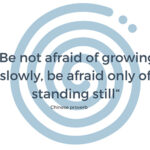| March 2024 |
The Dos and Don’ts for Writing Selection Criteria

Avoid disqualification and showcase your uniqueness
WRITTEN BY: Michelle White
I am often asked …Why are companies increasingly using selection criteria for job applications? What are selection criteria? How do you answer selection criteria?
Selection criteria, also known as job or employment criteria, can encompass a wide range of factors, including education, work experience, technical skills, interpersonal skills and cultural fit, depending on the nature of the job and the preferences of the hiring organisation.
Selection criteria provide an objective and fair basis for evaluating candidates. Instead of relying solely on subjective judgments, employers can use predefined criteria to assess applicants consistently, using the same standards and therefore reducing the likelihood of bias or discrimination.
Selection criteria have increasingly been chosen as a selection tool to help employers comply with legal requirements, such as anti-discrimination laws as it is intended to reduce the risk of discriminatory hiring practices.
Clearly stated criteria also benefit job applicants as they are clear on what is expected of them and can tailor their skills, increasing their chances of being selected for interviews.
DOS FOR SELECTION CRITERIA
Strictly adhere to the application limits and instructions
You will likely be directed to a link or section in the job ad where you are given parameters such as document formatting, including supporting documents such as a cover letter, word limit, or maximum page/document limit. If your presentation does not comply, your application could be a risk of being disqualified. Note this carefully.
Understand the Selection Criteria
Before you start writing, make sure you thoroughly understand each component of each criterion. You will often see more than one sub-criterion per criteria and each should be addressed separately. Study the job advertisement, position description, and any additional documentation you are referred to. This will help you tailor your responses to the specific requirements.
Tailor Your Responses
Each job application is unique, and your responses should reflect that. Customise your answers to align with the specific needs of the role you’re applying for. Highlight the experiences and achievements most relevant to the position.
Showcase Transferable Skills
Even if your previous roles were not identical to the one you are applying for, you are likely to have transferable skills. Identify and emphasise these skills in your responses. For example, if you are switching industries, highlight how your ‘project management’ experience or ‘ability to develop relationships’ can be applied to the new role.
Keep your responses clear, concise, and to the point
Avoid jargon, superlatives, and overly technical language. Your goal is to make it easy for the hiring manager to understand how well you meet the criteria.
“Clearly stated criteria benefit job applicants as they are clear on what is expected of them”
Tell your story and prove your capability
When addressing each criterion, start with a statement of competence and give some context to how you have used the specific criteria, such as “There have been numerous opportunities over the last 5 years to take on projects that involve….. In this statement, it should be clear that you have the relevant skills required.
Now, explain a particular example using the STAR method: Situation, Task, Action, Result.
- Start by describing the situation or the problem: “Our team was recently engaged to address the lack of ….”,
- Outline the task “The objective was to deliver an improved … “,
- Detail the actions you took: “I was accountable for …. I initiated….. Obtaining agreement was crucial…..I then …..”
- Conclude with the results or outcomes you achieved: “The project resulted in a 16% decrease in …. and has now been used as a framework across all the sales areas of the company”.
DON’TS FOR SELECTION CRITERIA
Copy responses
Directly copying online sources can often be easily detected by employers, which can lead to your application being rejected. It is important to use your own words and inject your personality as congruency between your written document and your performance and responses in the interview is important for authenticity and likeability.
Overuse of buzzwords and using uncommon acronyms
While it’s essential to use keywords from the job advertisement, avoid overusing buzzwords. Employers want to see your unique qualities and experiences, not a list of cliches. Acronyms can do more harm than good if they are not explained – use the acronym with a full explanation in brackets. After this, you can use the acronym in the rest of your document.
Stick to the point
Including information that is not directly related to the selection criteria or the job you are applying for can make your application seem unfocused, generic and less considered.
Proofread your document
Typos, grammatical errors, and poor formatting can harm your application’s credibility. Proofread your responses carefully and consider having someone review them as well.
Although selection criteria take quite a bit of time to craft it is a great opportunity to tell your career story and showcase your unique skills and experience. Embrace this opportunity to differentiate your application and deliver clear evidence of your value to the hiring manager.











